Daybreak in Alabama
In this state infamous for attempts to maintain rigid segregation by race, connections between people of different races gave us some amazing music. Visiting this place renewed my hope for our common humanity and our multiracial country.
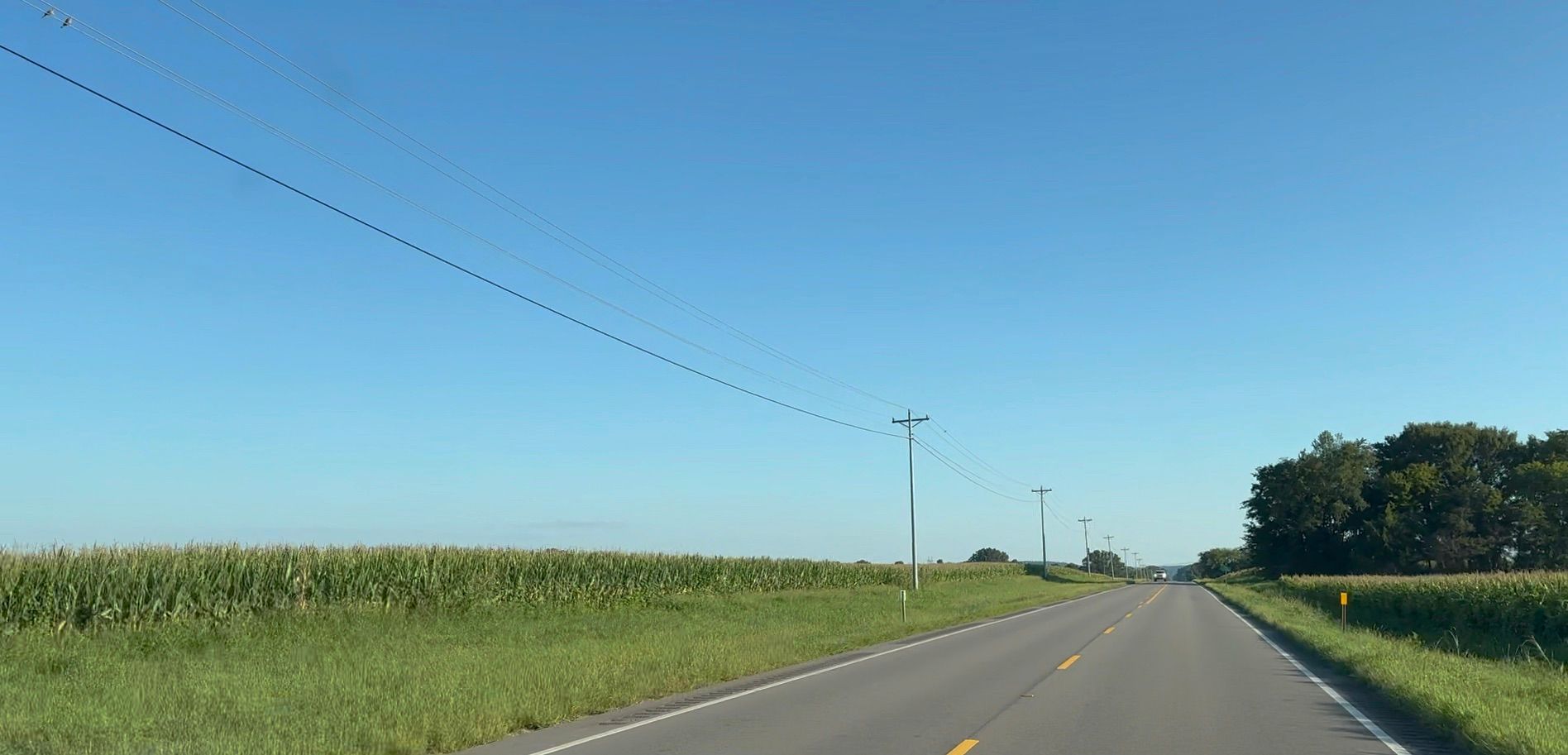
In 1940, Langston Hughes wrote a poem he titled "Daybreak in Alabama." A short, unusually uplifting lyric poem which imagines the creation of music arising from the land of Alabama and celebrates a harmony among the races "[i]n that dawn of music."
This summer I discovered that much of the most popular music of the 20th century has origins eerily similar to the description of the music in the poem. Ironically, I learned all of this on a trip that took us on to Nashville, but that's not where I learned so much about American music.
In August, on the way to Nashville, we spent a couple of nights outside of Florence in The Shoals area of northwest Alabama. The reason we went there was all wrong, but the visit changed my understanding of American cultural history. The trip was also a great travel experience. Even though the area is just four or five hours from Atlanta and two or three from Nashville and Birmingham, it is truly rural Alabama.
In our crowded times I can't think of any place so important culturally that is as approachable. If you visit, you will actually experience the place, not just view it through a transparent facade built to protect it from visitors. Often the original energy and culture of significant places exists only as a memory. Or if the vibrance is still there, it is carefully walled off from those of us passing through who are willing to pay money for the privilege of a glimpse. But in the Shoals area, even as a visitor you make contact with something.
I said our reason was wrong, and it was, but only because my timing was off. We chose to camp at Joe Wheeler State Park outside of Florence as part of my fruitless quest to see glow worms. Dismals Canyon in Alabama offers glow worm tours most of the year. (Sadly for me, not in mid- to late August this year.) Although Dismals Canyon has tent camping on site, we would be traveling in our RV with our dogs, and I needed to find a campsite with electric hookups so we could run the AC. Once we decided where to camp, I started looking for other interesting things to see or do in the area.
Looking at my map, I realized I'd heard of a town near Florence called Muscle Shoals. If you know about American music history then you know of Muscle Shoals, but I don't know much about music history. I'd heard of it because my former neighborhood hairstylist, Alvero, used to go to Muscle Shoals. He also lived a parallel life traveling the world working for designers and celebrities, so I always thought it a little incongruent that he also went to Muscle Shoals and stayed in his best friend's RV there. My husband thought Muscle Shoals was mentioned in "Sweet Home Alabama," but he wasn't sure. Once I started googling, I quickly found the documentary Muscle Shoals, which captures the central role the people of this tiny town played in shaping 20th-century music.
In the movie, famous artists like Bono, Wilson Pickett, Mick Jagger, Keith Richards, Aretha Franklin and Percy Sledge discuss the musical influence of the men behind the recording studios in Muscle Shoals. But the movie also conveys the belief that the true source of the music's power is the Tennessee River itself--the Singing River in the language of the native Yuchi tribe.
We only had time to visit one recording studio while we were there--Muscle Shoals Sound Studio. (Fame Studios would be the other major studio to visit.) The local musicians who founded the place and made it famous in the music world are mostly gone now, but our tour guide had known them all, and could tell stories second hand. About how Bob Seeger paid 20% royalties on his recordings based on a hand shake deal, while another famous artist stiffed them entirely. He could tell this story standing next right to the piano used in Seeger's "Old Time Rock'n'Roll." We also heard about how the recording studio was saved from years of neglect in part by a $1 million donation by Dr. Dre, who has no personal connection to the area, but was moved to help after watching the documentary. And how the former owner of the piano, who used it for piano lessons, gave it back because it belonged to music history. We also saw the small bathroom where Keith Richards worked for hours composing "Wild Horses."
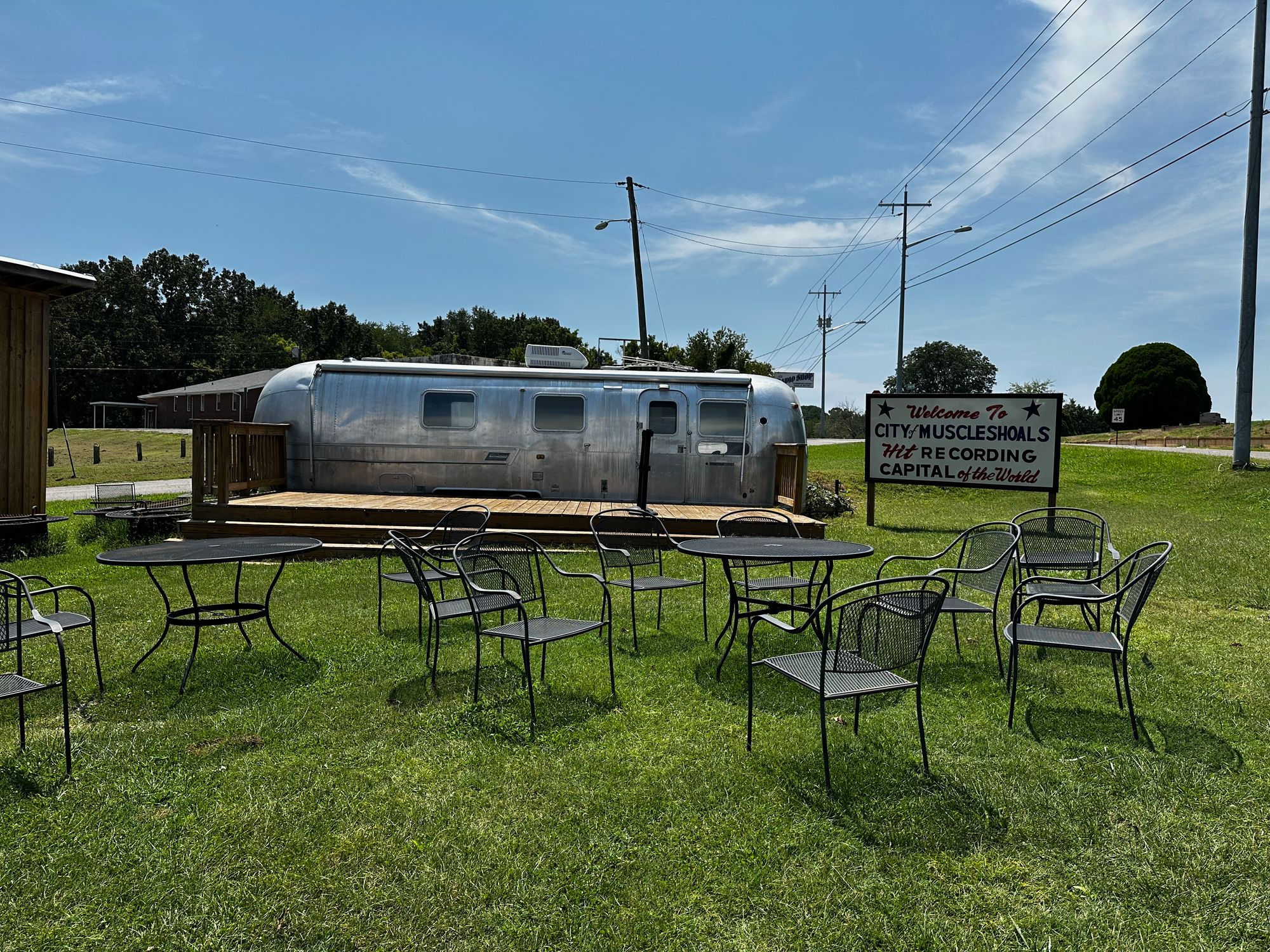
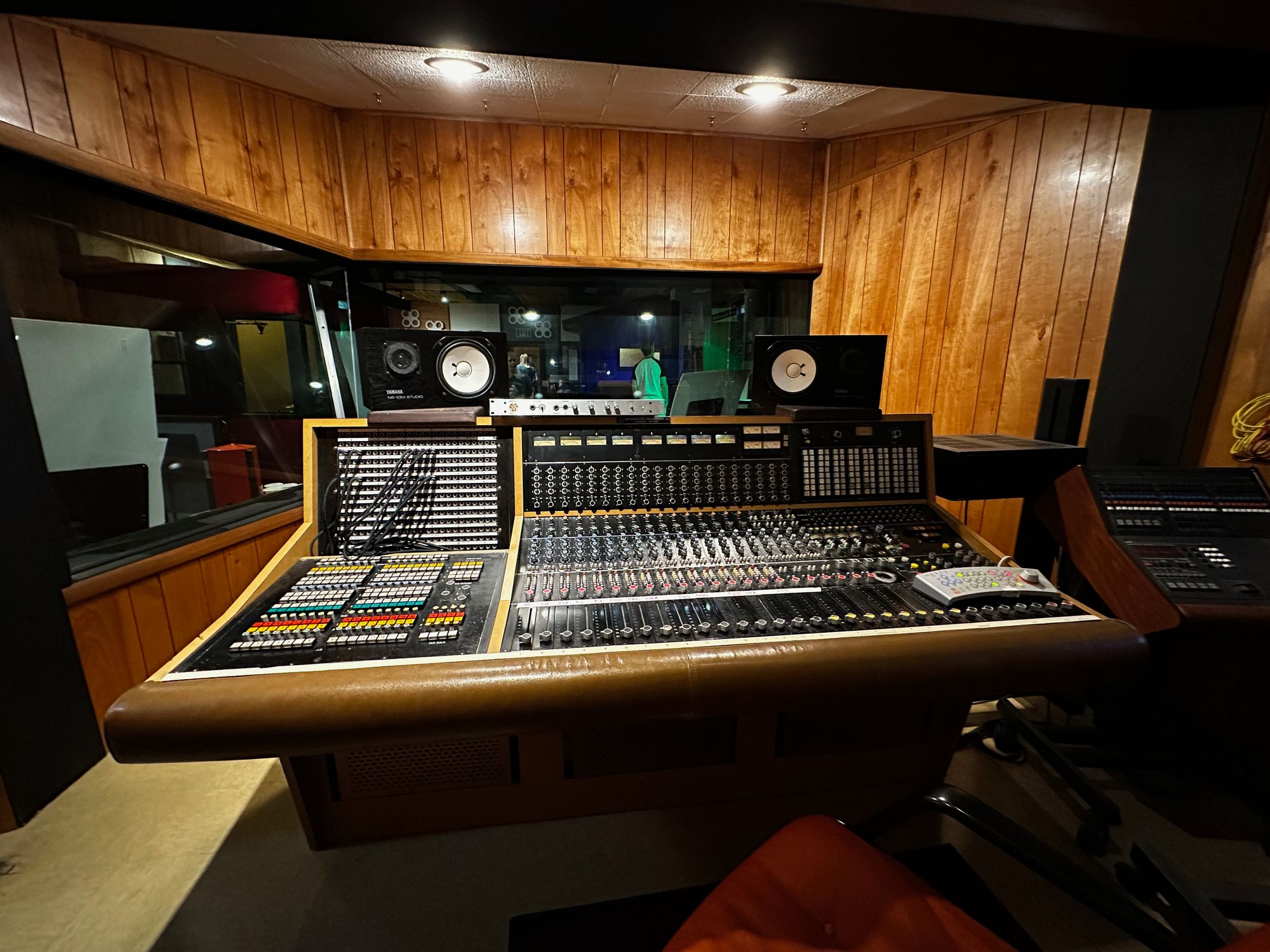
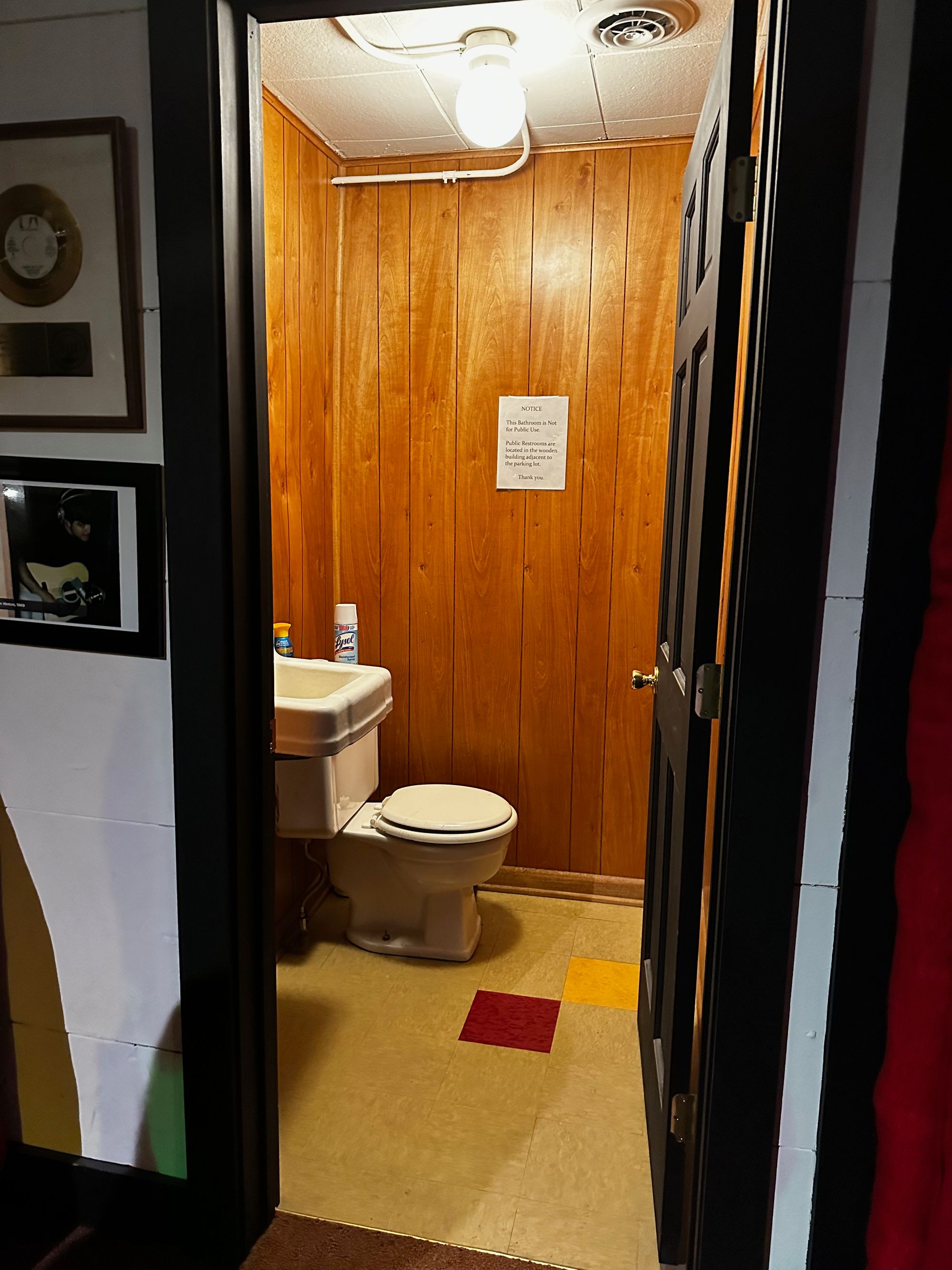
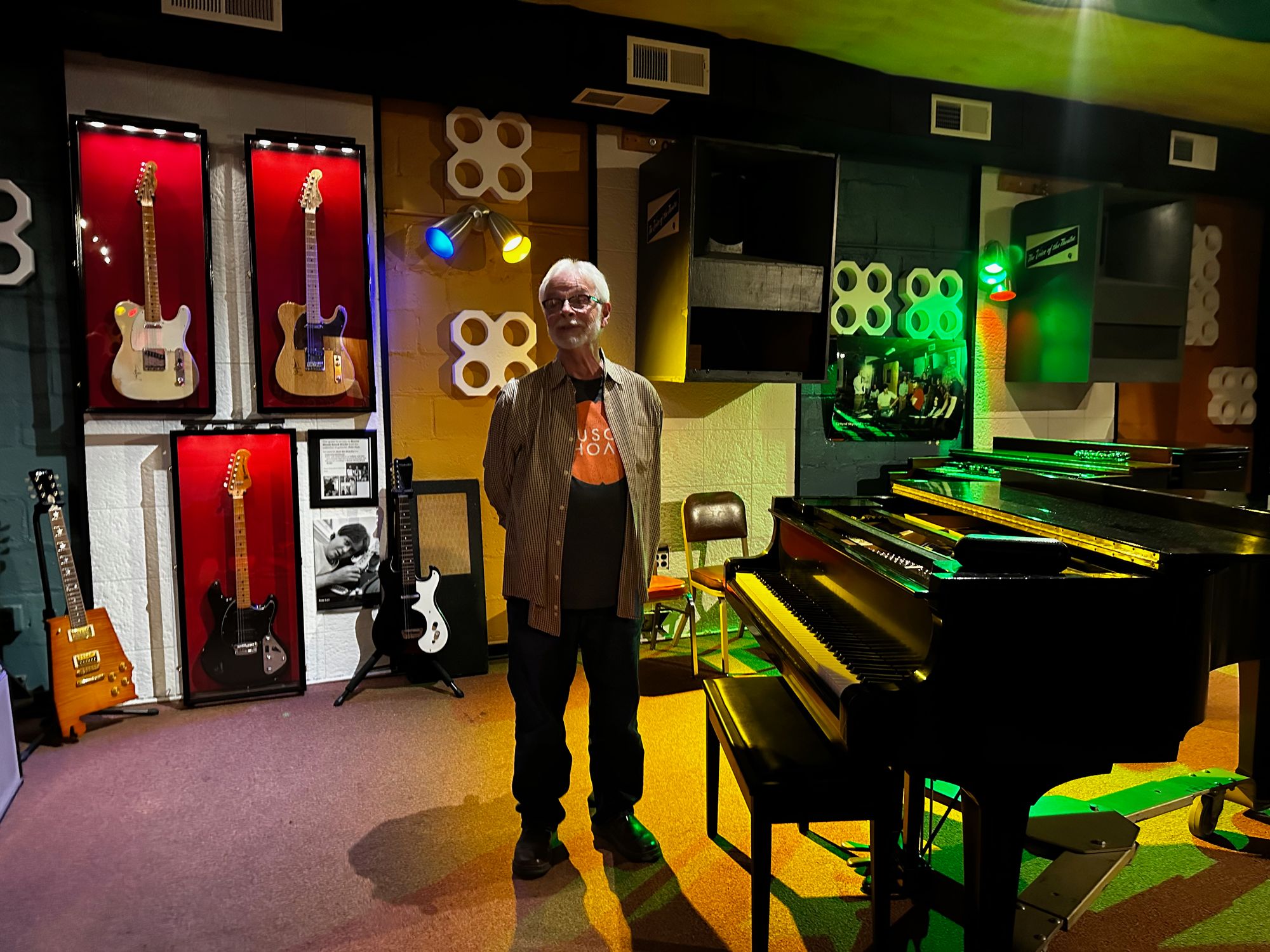
Before this trip, one of our more memorable travel experiences had been the tour of Sun Studios in Memphis. Sam Phillips, the founder of Sun Studios and the man who recorded Elvis Presley's first hit records. Turns out Sam Phillips was from Florence. So was W.C. Handy.
The sheer number of hit records tied to this little town is amazing, but what really stunned me was the integration of black and white musicians back in the 1950's and 60's when Alabama was the epicenter of white southern efforts to maintain racial segregation. Before this trip, I had a vague impression that white business men had stolen the sound of black music and used it to make money. Of course it is much more complicated than that. Black and white musicians and producers worked together as artists to develop this music. It can't be separated along racial lines and its power comes from all races "touching each other as natural as dew" in the words of Hughes.
In Hughes's poem, "the purtiest songs" are "[r]ising out of the ground like a swamp mist." Many threads of human culture mix together in this area and contribute to the unique power of the sound, but I am ready to believe that at least part of the power comes from the Tennessee River. I probably would be open to that idea just from watching the documentary, but another stop we made added credence to the theory.
Wichahpi Commemorative Wall is a tribute to a Yuchi woman, Te-lah-nay, who was displaced during the Indian Removal, survived the 600-mile Trail of Tears, and then turned around and spent 5 years walking back to her home on the shores of the Singing River in Northern Alabama. The site is modestly marked, but it is the largest memorial to a Native American woman in the world. Tom Hendrix, the man who built this memorial to his ancestor, has passed away, but his son Trace was there on the day we visited. Sitting patiently in the shade. Ready to tell you the history of the site if you want to know. No rush, no admission fee. This is a special place in its own right--a place of pilgrimage for people from around the world. Te-lah-nay told her family that she just kept moving toward home because none of the other rivers or streams she passed on her way were singing and that to survive she needed to hear the Singing River.
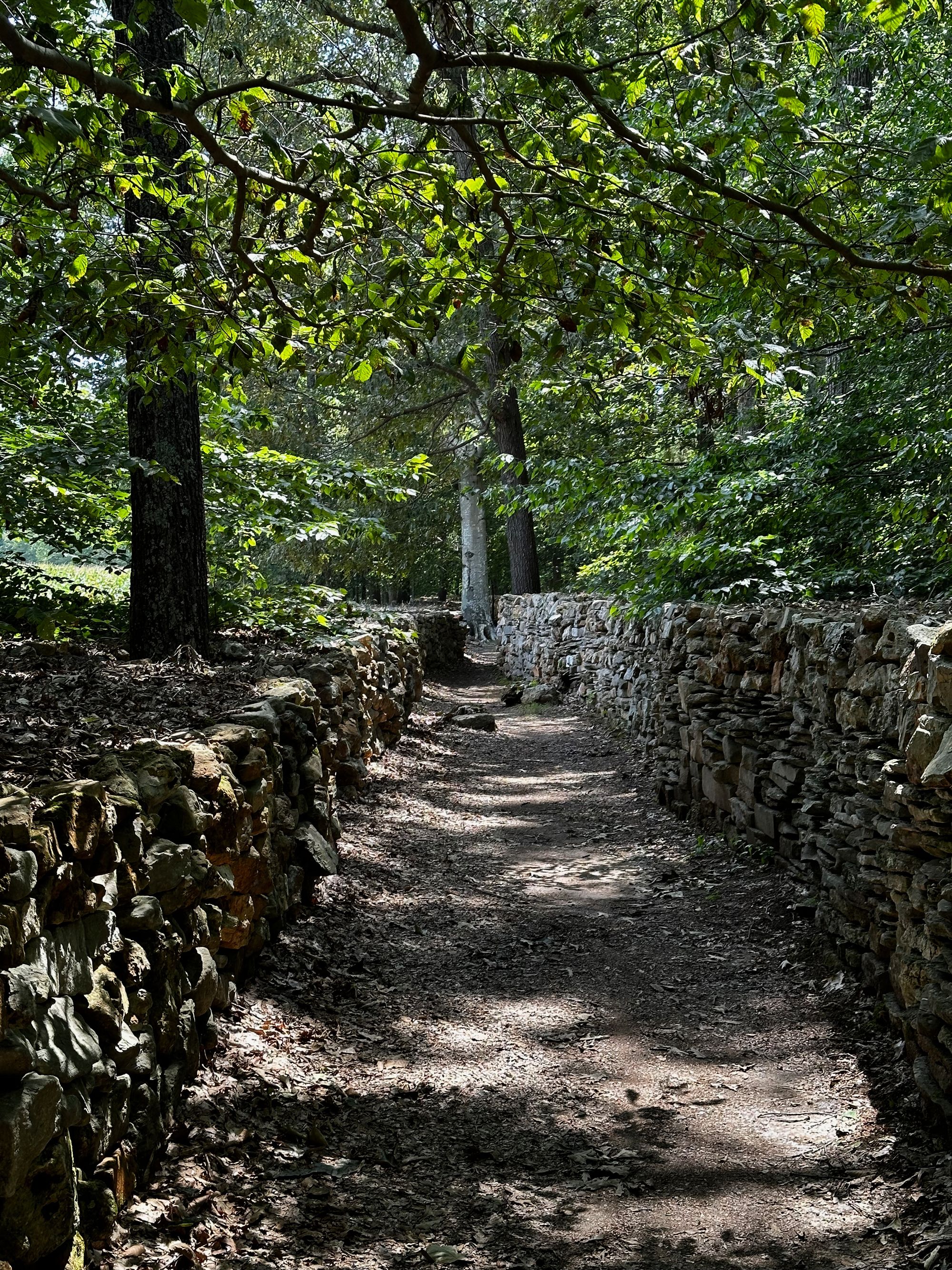
Te-lah-nay married a white man after she returned to Alabama, and the Yuchi Tribe was initially skeptical of Tom Hendrix, who looked white, but his knowledge of tribal customs and his documentation of his great, great grandmother's life proved his connection to their people.
In this state infamous for attempts to maintain rigid segregation by race, connections between people of different races gave us some amazing music. Visiting this place renewed my hope for our common humanity and our multiracial country.
I read an article by Evan Gardner in The Free Press recently--"Country Music and Me: My Great Migration in the Wrong Direction". Gardner is a student at Brown University and a Black man from New York who unexpectedly fell in love with country music and made his first trip South this summer on a pilgrimage to Nashville. He wrote:
"...country music isn’t truly white, because nothing in America is entirely white or black or anything else, and nothing that endures—nothing with value—is about race at all. It goes beyond that."
It does go beyond that. And in The Shoals you may get a glimpse of that beyond...
